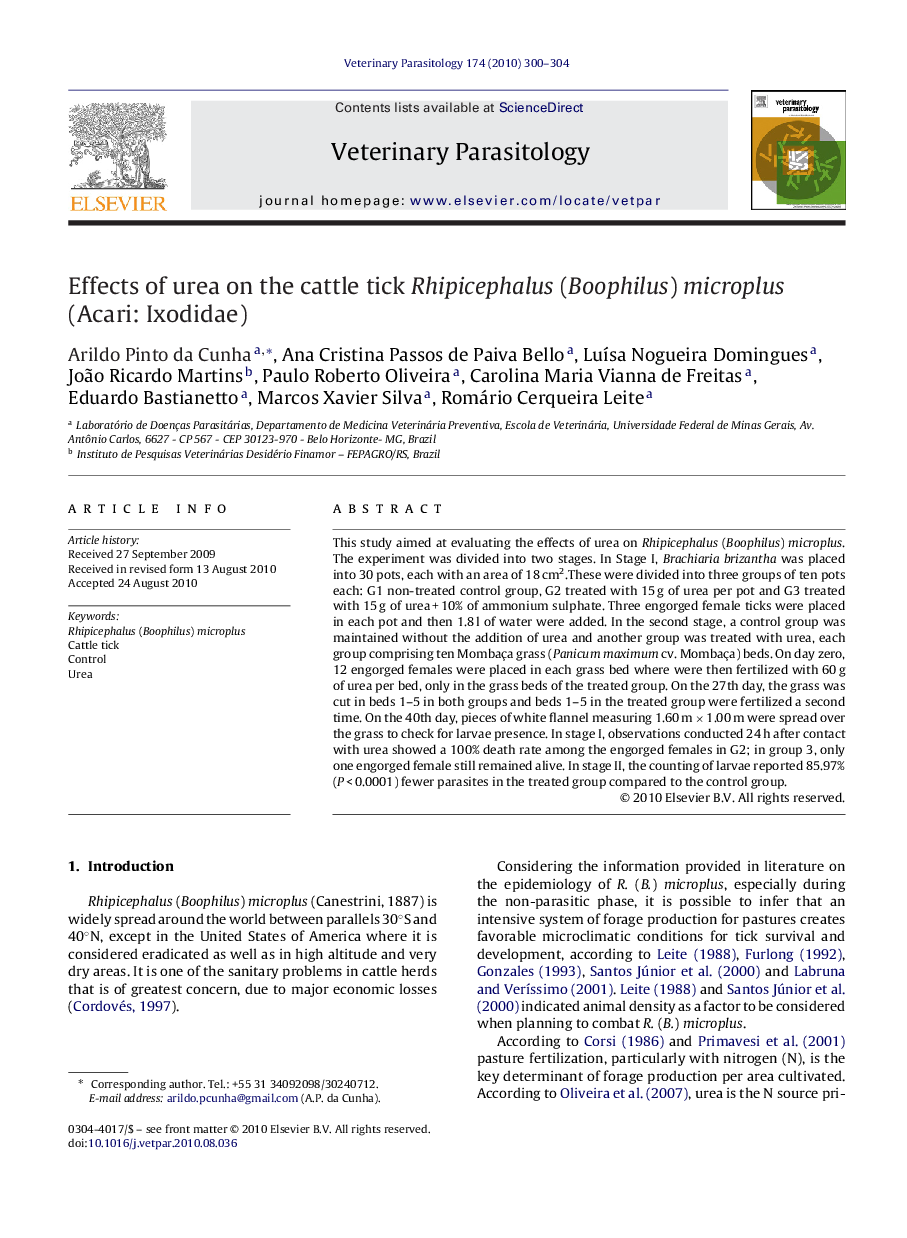| Article ID | Journal | Published Year | Pages | File Type |
|---|---|---|---|---|
| 5805983 | Veterinary Parasitology | 2010 | 5 Pages |
This study aimed at evaluating the effects of urea on Rhipicephalus (Boophilus) microplus. The experiment was divided into two stages. In Stage I, Brachiaria brizantha was placed into 30 pots, each with an area of 18 cm2.These were divided into three groups of ten pots each: G1 non-treated control group, G2 treated with 15 g of urea per pot and G3 treated with 15 g of urea + 10% of ammonium sulphate. Three engorged female ticks were placed in each pot and then 1.8 l of water were added. In the second stage, a control group was maintained without the addition of urea and another group was treated with urea, each group comprising ten Mombaça grass (Panicum maximum cv. Mombaça) beds. On day zero, 12 engorged females were placed in each grass bed where were then fertilized with 60 g of urea per bed, only in the grass beds of the treated group. On the 27th day, the grass was cut in beds 1-5 in both groups and beds 1-5 in the treated group were fertilized a second time. On the 40th day, pieces of white flannel measuring 1.60 m Ã 1.00 m were spread over the grass to check for larvae presence. In stage I, observations conducted 24 h after contact with urea showed a 100% death rate among the engorged females in G2; in group 3, only one engorged female still remained alive. In stage II, the counting of larvae reported 85.97% (P < 0.0001) fewer parasites in the treated group compared to the control group.
